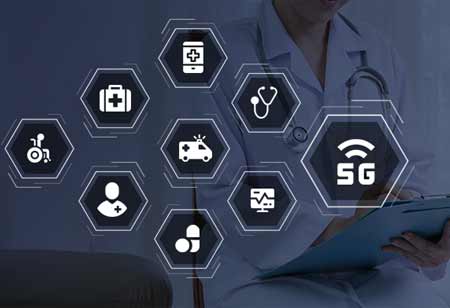THANK YOU FOR SUBSCRIBING
How Augmented Reality is Transforming Healthcare for the Better
Augmented reality is reshaping healthcare by enhancing diagnostics, improving surgical precision, enriching medical training, and fostering patient engagement, ultimately leading to better health outcomes.

By
Apac CIOOutlook | Friday, October 04, 2024
Stay ahead of the industry with exclusive feature stories on the top companies, expert insights and the latest news delivered straight to your inbox. Subscribe today.
Augmented reality is reshaping healthcare by enhancing diagnostics, improving surgical precision, enriching medical training, and fostering patient engagement, ultimately leading to better health outcomes.
FREMONT CA: Augmented reality (AR) transforms healthcare by enhancing how medical professionals diagnose, treat, and educate patients. By overlaying digital information in the real world, AR provides healthcare practitioners with innovative tools to visualize complex anatomical structures, improve surgical precision, and facilitate immersive training experiences. This transformative technology empowers surgeons with enhanced visualization during procedures, aids in patient rehabilitation through interactive exercises, and enriches medical education by allowing students to engage with 3D models of human anatomy.
Enhanced Surgical Precision: AR enhances surgical precision by projecting 3D models of a patient’s anatomy directly onto the surgical field. This technology provides surgeons with a clearer understanding of vital structures, facilitates minimally invasive procedures, accelerates recovery times, and reduces complications.
Improved Medical Education and Training: AR is modifying medical education and training by allowing complex medical procedures to be visualized and practiced in a safe, simulated environment. Medical students can engage in virtual dissections, practice suturing techniques, and rehearse intricate surgical procedures using AR-enabled mannequins.
Effective Diagnosis and Treatment Planning: AR analyzes medical scans and images in real-time, offering doctors a comprehensive understanding of a patient’s condition. By manipulating 3D models of organs or fractures, healthcare professionals can enhance their diagnosis and develop better treatment plans.
Streamlined Patient Communication: AR facilitates better patient communication by providing interactive and engaging explanations of complex medical concepts. By superimposing diagrams and animations onto a patient’s body, doctors can more effectively illustrate diagnoses and treatment options.
Remote Patient Monitoring and Assistance: AR technology supports remote consultations and patient monitoring, enabling healthcare providers to guide patients through self-care procedures or medication administration steps in real time. This approach ensures that patients receive the necessary assistance without requiring in-person visits.
Enhanced Pain Management and Rehabilitation: AR applications can significantly improve pain management by employing distraction techniques. Patients can use AR devices to immerse themselves in calming environments or interactive games during medical procedures or rehabilitation sessions, helping to alleviate anxiety and pain perception.
Improved Medication Adherence: AR-enabled pill bottles can remind patients regarding their medication schedules and dosages. An accompanying AR app can present visual cues and medication information directly on the bottle, aiding adherence to prescribed treatment plans.
Prosthetic Design and Fitting: AR is transforming prosthetic design and fitting by enabling the creation of custom-fit devices that closely resemble natural anatomy. Detailed imaging through AR scanners allows prosthetics to integrate seamlessly with a patient’s unique physical characteristics.
Streamlined Medical Inventory Management: In healthcare settings, AR can improve the management of medical supplies and equipment by allowing staff to track inventory in real time. By utilizing AR apps to scan barcodes, personnel can quickly access information regarding stock levels and locations of specific items.
Fostering Mental Health and Well-being: AR is a valuable tool for managing mental health conditions. Through AR applications, individuals can access relaxation techniques, exposure therapy in controlled environments, and gamified cognitive exercises that promote memory improvement and focus.
AR advancements further promise to enhance surgical precision, facilitate remote consultations, and enrich patient engagement. By integrating augmented reality into healthcare practices, the industry can achieve a new standard of care that prioritizes accuracy, efficiency, and accessibility. Embracing this innovative technology is essential for driving the future of healthcare toward improved quality and patient-centered solutions.





